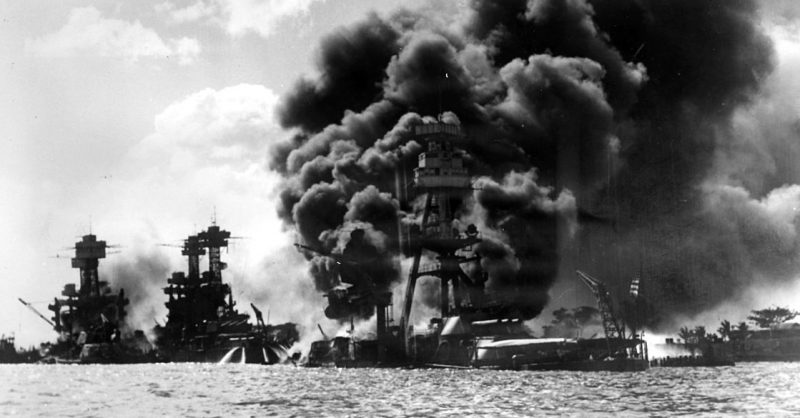After the Japanese attacked Pearl Harbor on December 7, 1941, the US was gripped by a wave of panic.
Newspapers printed maps of the US with circles marking the range of enemy bombers. Invasion rumors ran rampant, even in Chicago and Detroit, cities far enough inland to seem to be safe from any immediate danger. Telephone switchboards were overloaded as concerned citizens reported possible Japanese Zeroes on the horizon.
The threat felt real and it seemed imminent. Even President Franklin Roosevelt remarked in a press conference about the possibility of enemy ships shelling New York or troops invading Alaska.
Over 100,000 residents of Detroit volunteered to act as air wardens and volunteer firefighters during World War II. Civil defense was typically haphazardly arranged, so each neighborhood came up with their own plans for defense. But the important thing was the responses to the needs of their country as citizens joined together to offer aid and defend their country.
The bestselling book in 1942 was the “Red Cross First Aid Handbook” as air wardens purchased it to prepare for their role. Known by the white helmets and armbands they wore, they took their position seriously as they patrolled for any light leakages.
Wardens would ticket or lecture anyone who endangered public safety. They presented workshops, urging residents to stock up on food, water and blackout candles. They taught the importance of designating a “refuge room” in the center of your home.
Detroit’s civil defense officials were given gas masks which were locally manufactured at the Eureka Vacuum Cleaner Company. There weren’t enough for everyone in Detroit, so the actual means of distributing them to residents was left to the officials.
Sandbags were placed around the power plants and communications centers. Guards kept out all but those most essential to the running of those centers. Machine gun mounts were attached to the roof of WWJ Radio’s headquarters and the Fisher Building, headquarters of WJR.
Unlike Europe and Asia, North American cities came out of WWII, for the most part, untouched. All of the drills, blackout curtains and refuge rooms weren’t needed after all. Detroit was too far from any of the Axis powers for them to reach with even their best weapons. Every rumor of an invasion was debunked, and the U-Boats never made it into the Great Lakes.
The exception is the fu-go (“wind-ship weapon”) devices Japan launched in the fall and winter of 1944-45. Hirohito’s generals could not accept their inevitable defeat, and they launched what one historian considers the first intercontinental weapons.
Paper balloons, thirty feet across, were outfitted with fire bombs and released into the jet stream with the hopes that they would land in the US Pacific Northwest. The hope was that the expected forest fires would divert US resources from the war and panic the general public.
Only around 300 of the devices made it to the US. They started a few fires. One managed to kill six people who happened to be camping where it touched down and detonated.
One of them made it as far as Michigan where it landed in the vegetable garden of a man living northwest of Detroit. He showed it to his neighbor who was a police officer. Experts in Washington confirmed that it was an incendiary device that originated from Japan, The Detroit News reported.
The details of the fu-go balloons were withheld from the public. No serious damage was done. Japan’s final desperate act of WWII was just never meant to happen.
